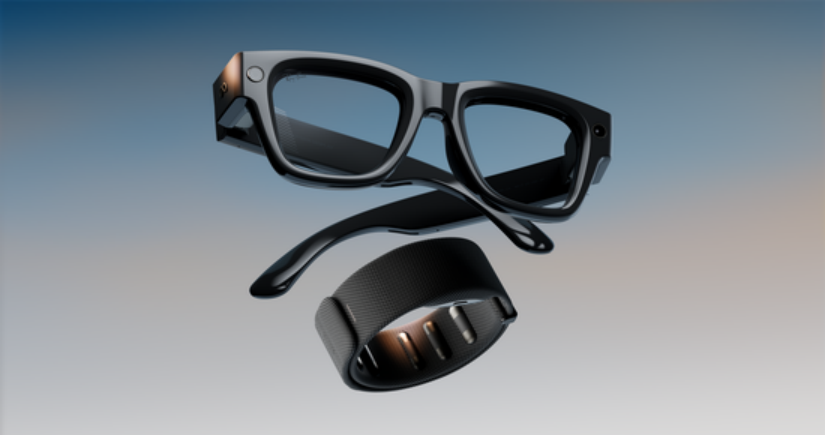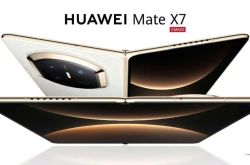AI Chip World丨Trends丨Optical Waveguide Screens + AI: A Potential Turning Point for Smart Glasses
![]() 10/09 2025
10/09 2025
![]() 498
498
Foreword:
AI glasses, a type of consumer electronics product, have rapidly transitioned from a 'niche tech product' to the mainstream over the past year. However, behind the seemingly booming market, the current development of AI glasses has hit a significant bottleneck.
Previously, the domestic AI glasses market saw a surge in competition known as the 'Hundred Glasses Battle.' Small and medium-sized manufacturers quickly gained a foothold in niche markets through precise online marketing. Meanwhile, leading brands leveraged their supply chain integration advantages to launch low-priced AI glasses priced around 1,000 yuan, attempting to capture user mindshare with 'cost-effectiveness.'
However, this lively competition did not propel the industry's rapid development but instead exposed widespread product shortcomings.
Author | Fang Wensan
Image Source | Network

Optical Waveguide Screens: A 'New Vision' for Smart Glasses
In the evolution of smart glasses, display technology has consistently been a key constraint. Early smart glasses adopted prism or Birdbath solutions, which, while enabling image display to some extent, had numerous drawbacks.
The prism solution resulted in bulky and heavy glasses, causing significant discomfort during prolonged wear and failing to meet the demands of daily long-term use.
The emergence of optical waveguide screens has introduced a new solution to the display challenges of smart glasses. Operating on the principle of total internal reflection, these screens guide light through ultra-thin transparent materials, transmitting images from micro-displays to the human eye.
Firstly, they are extremely thin, with thicknesses controllable within a few millimeters, significantly reducing the overall weight of smart glasses. Secondly, optical waveguide screens offer a wide field of view, providing a more immersive experience for users, whether watching videos, browsing information, or navigating.
Additionally, they boast high brightness, enabling clear image display even in outdoor strong light conditions, with vivid colors and high contrast, effectively addressing the issue of poor visibility under strong light in traditional display technologies.
Moreover, the high light transmittance of optical waveguide screens allows for a natural fusion of real-world scenes and virtual images, providing superior display effects for augmented reality (AR) applications and enabling users to interact more naturally with virtual information in the real world.
Technical Routes of Optical Waveguide Screens
Currently, there are two primary technical routes for optical waveguide screens: geometric optical waveguides and diffractive optical waveguides. Geometric optical waveguides primarily utilize geometric optical elements such as prisms and mirrors, employing the principle of total internal reflection to propagate light within the lens and ultimately direct the image to the human eye.
The advantage of this technical route lies in its high imaging quality, with excellent color reproduction and contrast, providing relatively clear and realistic image display effects.
However, geometric optical waveguides also have some drawbacks, including complex manufacturing processes, high costs, and difficulties in mass production. The lens thickness is relatively thick, posing challenges in achieving slimness. Currently, Israel's Lumus is a representative manufacturer of geometric optical waveguide technology, with its technology applied in some high-end AR devices.
Diffractive optical waveguides, on the other hand, involve designing nanoscale gratings (diffractive optical elements) on the lens surface, utilizing the diffraction effect of light to couple light into the waveguide and propagate it through total internal reflection within the lens, ultimately directing it to the human eye.
The advantage of diffractive optical waveguides lies in their ability to achieve ultra-thin lenses, which are lighter and more conducive to the miniaturization and slimming design of smart glasses.
However, diffractive optical waveguides also face some technical challenges, such as relatively low light utilization, high design thresholds, and the potential for 'rainbow effects' in some products, where colored fringes appear at the edges of images, affecting visual quality.
In the field of diffractive optical waveguides, Crystal Optech and Kunyou Optoelectronics are notable representative manufacturers, making continuous progress in technology research and development and product mass production.
Currently, some consumer-grade smart glasses products have begun to adopt optical waveguide screen technology, such as certain AR glasses launched by Rokid, providing users with a better visual experience and usage feeling.
Optical Waveguide Screens + AI: Ushering in a New Era for Smart Glasses
The integration of optical waveguide screens and AI technology has brought unprecedented transformative experiences to smart glasses. With the clear display effects of optical waveguide screens, navigation information can be presented intuitively to users, eliminating the need to look down at their phones.
The addition of AI technology makes navigation more personalized and precise. It can plan optimal routes for users based on their travel habits, real-time traffic conditions, and other information, while providing real-time traffic alerts.
In cross-border communication scenarios, smart translation capabilities play a crucial role. Whether for business negotiations, travel exchanges, or academic conferences, smart glasses can enable real-time voice translation.
Object recognition is another highlight of the integration of optical waveguide screens and AI technology. When users encounter unfamiliar objects, they can simply point their smart glasses at them, and AI algorithms can quickly identify the objects and display relevant information through the optical waveguide screens.
Opportunities for Domestic and International Smart Glasses Enterprises
Data predicts that global smart glasses shipments will reach 12.8 million units in 2025, a 26% year-on-year increase, with the Chinese market expected to surpass 2.75 million units, a staggering 107% year-on-year increase, becoming the world's largest smart glasses consumer market.
Currently, the competitive landscape of the smart glasses industry is diversified, with numerous domestic and international tech giants and innovative enterprises making strategic moves in this field.
Foreign companies such as Meta and Google have secured a certain market share in the smart glasses market with their strong technical capabilities and brand influence.
Recently, Meta launched three AI glasses: Ray-Ban Meta Gen2, Oakley Meta Vanguard, and Meta Ray-Ban Display.
Together, these three products form Meta's comprehensive AI glasses lineup. Ray-Ban Meta Gen2 is an iterative upgrade of the original Ray-Ban Meta, Oakley Meta Vanguard targets the sports demographic, and Meta Ray-Ban Display aims at the currently bustling 'AR display' market.
Overall, these three glasses have seen upgrades in pixels, image stabilization, and battery life.
The shooting effect has been enhanced, with the previous generation's 12-megapixel camera capable of shooting 2K videos, now upgraded to 3K videos across the board. Image stabilization has been strengthened, enabling Oakley Meta Vanguard to capture high-definition footage even in special environments like cross-country running and skiing. Battery performance has significantly improved, with the new generation Ray-Ban Meta offering up to 30 hours of ultra-long battery life when used with a charging case, and Oakley Meta Vanguard providing 9 hours, meaning it can last through a marathon.
Domestic enterprises are also making strides in the smart glasses field. Huawei's Smart Glasses 2 Titanium Space Round Frame Optical Glasses innovatively integrate traditional optometric lenses with smart functions, equipped with HarmonyOS 4 and the Pangu 5.0 large model. Tapping the temple of the glasses can awaken (this Chinese word means 'awaken' and is kept for specific term usage, translated contextually above) no-sense interaction, automatically pushing scenario information such as flight and ride-hailing details.
On the technical side, the holographic optical waveguide module jointly developed with Suda Weige has entered practical testing, with a 15-meter virtual image distance suitable for L3+ autonomous driving. The AI algorithm can adjust the navigation display density based on vehicle speed. Its core advantage lies in its ecological closed loop, capable of cross-device access to Huawei Cloud space data, with the AR interface simultaneously presenting office and health data.
Xiaomi's first AI smart glasses, priced below 1,300 yuan, have broken through industry barriers. With a lightweight design of 40 grams and a 12-degree outward flip hinge suitable for Asian faces, the Boeing 787-grade electrochromic lenses can adjust the shading level in 0.2 seconds.
Adopting a dual-core architecture of Qualcomm AR1 and BES, it balances AI computing power with 8.6 hours of battery life. With the HyperOS ecosystem, the 12-megapixel camera can directly connect to WeChat calls and Douyin live broadcasts. Xiao Ai supports translation in ten languages and meeting recording, capturing 23% of the thousand-yuan market share in its first month of release, propelling Xiaomi into the top three in the industry.
OPPO's Air Glass 3, weighing 50 grams, closely resembles the experience of ordinary glasses. Its self-developed resin wafer diffractive optical waveguide lens has a refractive index of 1.70, and its 1000-nit brightness solves outdoor display challenges. Deeply integrated with the AndesGPT large model, a light tap on the temple enables voice interaction and colorful image browsing, with reverse sound field audio design balancing sound quality and privacy.
Leveraging Zhuhai Mojie Technology to optimize supply chain costs, it simultaneously launches a developer ecosystem, planning to access over 100 third-party applications by the end of 2025, reinforcing its positioning as the 'best companion for smartphones.'
Conclusion:
The integration of optical waveguide screens and AI technology undoubtedly brings a new turning point to the development of smart glasses.
From hype to sales, from user experience to return rates, the long-awaited explosion of AI glasses among practitioners has yet to arrive. This is destined to be a marathon.
Content Sources: Dingjiao One: The Pain of AI Glasses, Even Meta Can't Cure It; Yangtze Evening News: Xiaomi Launches First AI Smart Glasses, Exploring New Scenarios for Consumer-Grade Smart Wearables; 21st Century Business Herald: The Smart Glasses Trend Emerges: The Rise of the Zhuhai Industrial Chain Group in the 'Hundred Glasses Battle'; Hanging Hang Cha: Optical Waveguides: The Bright Future of AR Device Optical Waveguides; [XR Technology Introduction] A Review of Mainstream AR Optical Solutions







